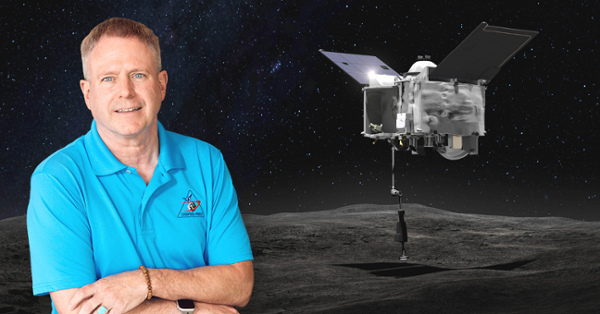Connolly: Bennu samples reveal clues to solar system origins, water-rock chemistry, space weathering
Connolly: Bennu samples reveal clues to solar system origins, water-rock chemistry, space weathering

Three newly published studies from NASA’s OSIRIS-REx mission team are shedding light on the complex history of asteroid Bennu and its parent body, offering fresh insights into planetary formation and evolution.
Rowan University geology chair Harold Connolly, Jr., Ph.D., who serves as mission sample scientist for NASA’s OSIRIS-REx voyage to the asteroid Bennu and back, said the findings released August 22 further scientific understanding of the asteroid, its parent body, and the reservoir of material from which that body formed.
The spacecraft launched Sept. 8, 2016, successfully completed a remote sampling procedure above the moving asteroid Oct. 20, 2020, and returned a sample of about 122 grams Sept. 24, 2023, far exceeding the mission’s minimum goal.
As mission sample scientist, Connolly oversees all aspects of research into the ancient space rocks and dust returned by the craft, which have already revealed the presence of hydrated minerals, salts and prebiotic compounds, which are necessary for life.
The new studies include:
- “The variety and origin of materials accreted by Bennu’s parent body,” by Barnes & Nguyen et al. in Nature Astronomy, which show that the primordial building blocks of the parent body were a mix of materials from across and even beyond our solar system.
- “Mineralogical evidence for hydrothermal alteration of Bennu samples,” by Zega & McCoy et al. in Nature Geoscience, explored water-rock reactions in Bennu’s parent body that produced the minerals we see in the sample today, Connolly said.
- “Space Weathering Effects in Bennu Asteroid Samples,”by Keller & Thompson et al. in Nature Geoscience, examines the effects of micrometeorite impacts, solar photons and other forces that are active “on the surface of bodies like Bennu that do not have atmospheres to protect them from the space environment. We show how little pieces of dust, for example, affect the surface,” Connolly said.
“Together, these studies deepen our understanding of Bennu’s formation, its parent body's watery past, and the subtle forces that shape asteroid surfaces over time,” Connolly said.